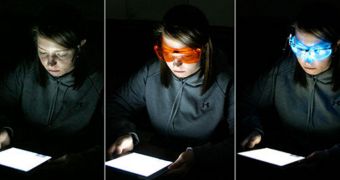Investigators at the Rensselaer Polytechnic Institute (RPI) Lighting Research Center (LRC) discovered in a new study that teens who use electronic devices with backlit (self-luminous) displays at night experience delayed bedtimes.
According to the team, even a 2-hour exposure to these devices – which include cell phones, smartphones, laptops and tablet PC – leads to significant melatonin suppression in the human body.
This chemical plays an important role in controlling our natural body clocks, also known as the circadian rhythm. This cycle allows us to take advantage of the night-day cycle, and triggers a host of changes in the body that makes it easier for us to rest at night and wake up in the morning.
When melatonin production is suppressed, the circadian rhythm remains active even when it's not supposed to. The molecular and cellular changes associated with going to sleep are delayed as well, which makes it even harder for people who consume a lot of technology to get the rest they need.
Details of the new investigation appear in a paper entitled “Light level and duration of exposure determine the impact of self-luminous tablets on melatonin suppression,” which was published in a recent issue of the esteemed journal Applied Ergonomics.
The work was led by RPI Associate Professor Mariana Figueiro, who is also the director of the LRC Light and Health Program. She and her team tested their hypothesis on a group of 13 test subjects. The participants used backlit tablets to read, play games or watch movies before bedtime.
“Our study shows that a two-hour exposure to light from self-luminous electronic displays can suppress melatonin by about 22 percent. Stimulating the human circadian system to this level may affect sleep in those using the devices prior to bedtime,” Figueiro comments.
RPI experts believe that the new data could be very useful to companies that build self-luminous devices. Using this information, the manufacturers could create screens that encourage alertness in the morning and sleepiness at night.
“Technology developments have led to bigger and brighter televisions, computer screens, and cell phones,” explains LRC research specialist, Brittany Wood.
“To produce white light, these electronic devices must emit light at short wavelengths, which makes them potential sources for suppressing or delaying the onset of melatonin in the evening, reducing sleep duration and disrupting sleep,” she adds.
“This is particularly worrisome in populations such as young adults and adolescents, who already tend to be night owls,” Wood concludes.

 14 DAY TRIAL //
14 DAY TRIAL //